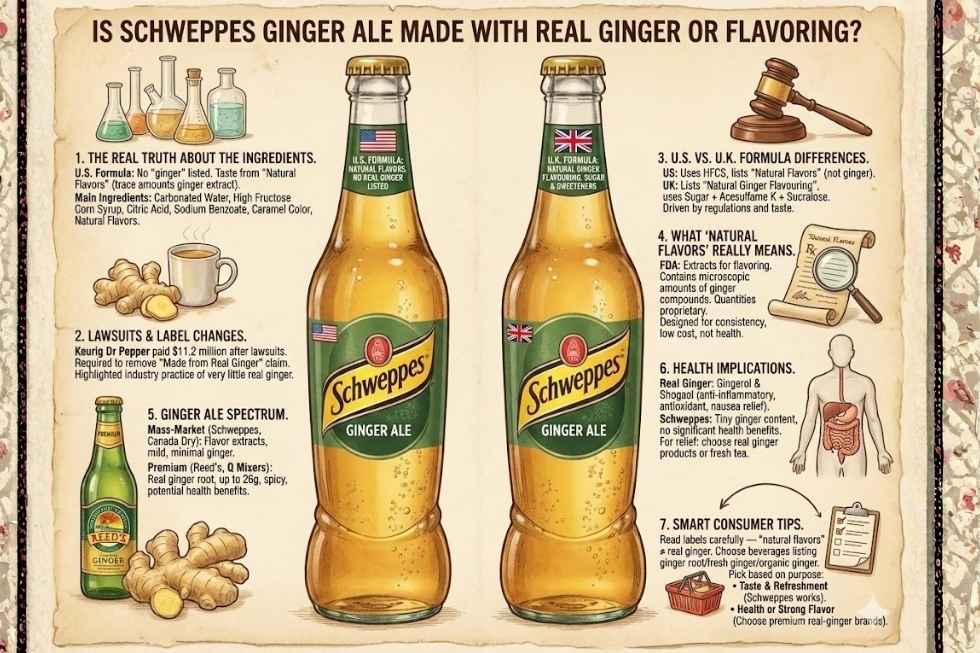No products in the cart.
Beverages News, Schweppes, Soft Drinks
Is Schweppes Ginger Ale Made With Real Ginger Or Flavoring
Schweppes ginger ale relies on “Natural Flavors” instead of listing ginger as a specific ingredient, highlighting how the brand uses only trace amounts of actual ginger extract to achieve its recognizable taste.
Key Takeaways
- Schweppes ginger ale does not include ginger as a standalone ingredient, instead using “Natural Flavors” which may include minimal amounts of ginger extract combined with other flavoring agents.
- Legal actions have impacted marketing claims, with a settlement totaling $11.2 million requiring Keurig Dr Pepper to eliminate “Made from Real Ginger” labels, indicating a broader industry trend of using very little real ginger.
- Regional formulation differences exist; for example, the U.K. version of Schweppes openly lists “Natural Ginger Flavouring,” while the U.S. product uses the broader term “natural flavors.”
- Premium brands like Reed’s Ginger Brew use real ginger, with up to 26g of ginger root per bottle, resulting in a spicier profile and potential mild health benefits.
- For genuine ginger benefits, consumers should seek products that list “ginger root” or “fresh ginger” directly on their ingredient labels, rather than relying on standard commercial ginger ales.
Table of Contents
More on Ginger Content and Labeling Lawsuits
Several class-action lawsuits have brought scrutiny to the marketing tactics of large beverage manufacturers. In particular, Keurig Dr Pepper, the parent company of Schweppes and Canada Dry, agreed to pay $11.2 million in settlements and had to remove misleading claims from packaging following allegations that their drinks barely contained real ginger.
Alternative Options for Ginger Lovers
For consumers looking for ginger ale with authentic health benefits or a stronger, more natural ginger flavor, brands like Reed’s Ginger Brew provide genuine alternatives. These beverages often include fresh ginger or ginger root, sometimes in therapeutic quantities.
The Truth Behind Schweppes Ginger Ale’s Ingredients
I’ve examined the current U.S. ingredient list for Schweppes Ginger Ale, and the results might surprise you. The official ingredients read: Carbonated Water, High Fructose Corn Syrup, Citric Acid, Sodium Benzoate, Caramel Color, Natural Flavors. Notably absent from this list is “ginger” as a standalone ingredient.
Where the Ginger Flavor Actually Comes From
The ginger-like taste you experience comes from the “Natural Flavors” component, which represents a proprietary blend that manufacturers keep closely guarded. This category can legally include extracts from ginger root, but there’s a significant catch. Companies aren’t required to disclose how much ginger extract is actually used in their formulations.
Based on industry standards and labeling regulations, I can tell you that “natural flavors” often contain only trace amounts of the actual ingredient that gives the product its characteristic taste. This means the ginger content in Schweppes could be minimal—potentially just enough to legally claim natural flavoring while still delivering the familiar ginger ale taste through other compounds.
Breaking Down the Ingredient List
Each component serves a specific purpose in creating the final product:
- Carbonated Water provides the fizzy base that makes ginger ale refreshing
- High Fructose Corn Syrup acts as the primary sweetener, giving the drink its characteristic sweetness
- Citric Acid adds tartness and helps preserve the beverage while enhancing flavor
- Sodium Benzoate functions as a preservative to extend shelf life
- Caramel Color gives the drink its golden-brown appearance
- Natural Flavors create the signature ginger ale taste profile
The absence of “ginger” as a distinct ingredient reveals that Schweppes relies heavily on flavor chemistry rather than substantial amounts of actual ginger root. This approach allows for consistent taste and longer shelf stability while keeping production costs manageable.
For those interested in the potential health implications, understanding these ingredients becomes crucial. While Schweppes ginger ale’s digestive benefits are often discussed, the minimal ginger content means you shouldn’t expect the same effects as consuming actual ginger root. Similarly, if you’re considering whether it helps with diarrhea, the trace amounts of real ginger make it less effective than traditional ginger remedies.
The proprietary nature of natural flavors means I can’t provide exact percentages of ginger extract used. However, food scientists typically use synthetic compounds that mimic ginger’s flavor profile, supplemented with small amounts of actual ginger extract to meet natural flavoring requirements. This explains why Schweppes tastes distinctly like ginger ale without listing ginger as a primary ingredient.
Manufacturing efficiency drives this formulation approach. Real ginger root varies in potency and flavor intensity depending on growing conditions, harvest timing, and storage methods. Using controlled natural flavoring allows Schweppes to maintain consistent taste across millions of bottles while avoiding the complications that come with processing fresh ginger.
The high fructose corn syrup content also impacts the overall flavor balance. This sweetener masks any harsh notes that might come from stronger ginger concentrations, creating the smooth, approachable taste that has made Schweppes a household name. The citric acid further balances the sweetness while providing the slight bite that consumers associate with quality ginger ale.
Understanding these ingredients helps you make informed choices about what you’re consuming. While Schweppes delivers on taste and refreshment, those seeking significant ginger content for health purposes might want to consider alternatives that list ginger prominently in their ingredient panels or explore actual ginger-based beverages and supplements.
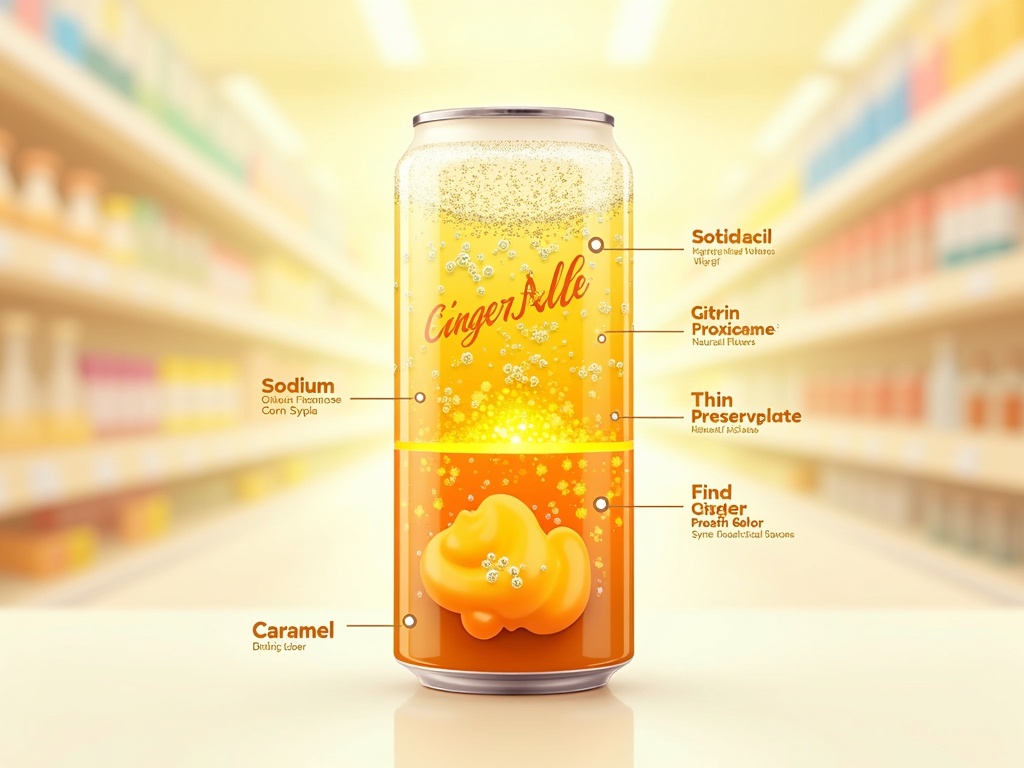
What “Natural Flavors” Actually Means
The U.S. FDA defines “natural flavor” under regulation 21 CFR 101.22 as a substance derived from plant or animal materials used primarily for flavoring purposes. This regulatory framework allows beverage companies like Schweppes to source their ginger flavor from various ginger-derived compounds, including extracts, distillates, essences, or even fermentation by-products.
The Gap Between Natural Flavoring and Real Ginger
Natural flavoring operates differently from adding actual ginger root to your beverage recipe. When examining the process, flavor concentrates typically contain only microscopic quantities of the original plant compounds. This means Schweppes can legally claim “natural ginger flavor” while using minimal amounts of actual ginger-derived substances.
The extraction process concentrates specific flavor molecules that provide the characteristic ginger taste without requiring substantial amounts of the original root. Manufacturers often combine multiple ginger-derived compounds to create a consistent flavor profile that tastes like ginger but doesn’t necessarily provide the same health benefits you’d get from fresh ginger.
Proprietary Formulas and Undisclosed Quantities
Schweppes keeps the exact amount of ginger extract in their formula confidential as part of their proprietary blend. This trade secret protection means consumers can’t determine how much actual ginger-derived compounds they’re consuming when they drink the beverage.
The proprietary nature of these formulas allows companies to optimize for taste, cost, and shelf stability rather than maximizing ginger content. Most commercial ginger ales prioritize consistent flavor delivery over therapeutic ginger quantities.
Understanding these distinctions helps explain why some people find Schweppes ginger ale’s digestive benefits limited compared to beverages made with substantial amounts of real ginger. The natural flavoring approach delivers the familiar ginger taste without necessarily providing the bioactive compounds found in fresh ginger root.
This regulatory framework creates a middle ground where products can maintain “natural” labeling while using processed flavor compounds. For consumers seeking authentic ginger benefits, this distinction becomes crucial when evaluating whether ginger ale provides real relief for digestive issues or simply offers a ginger-flavored refreshment.
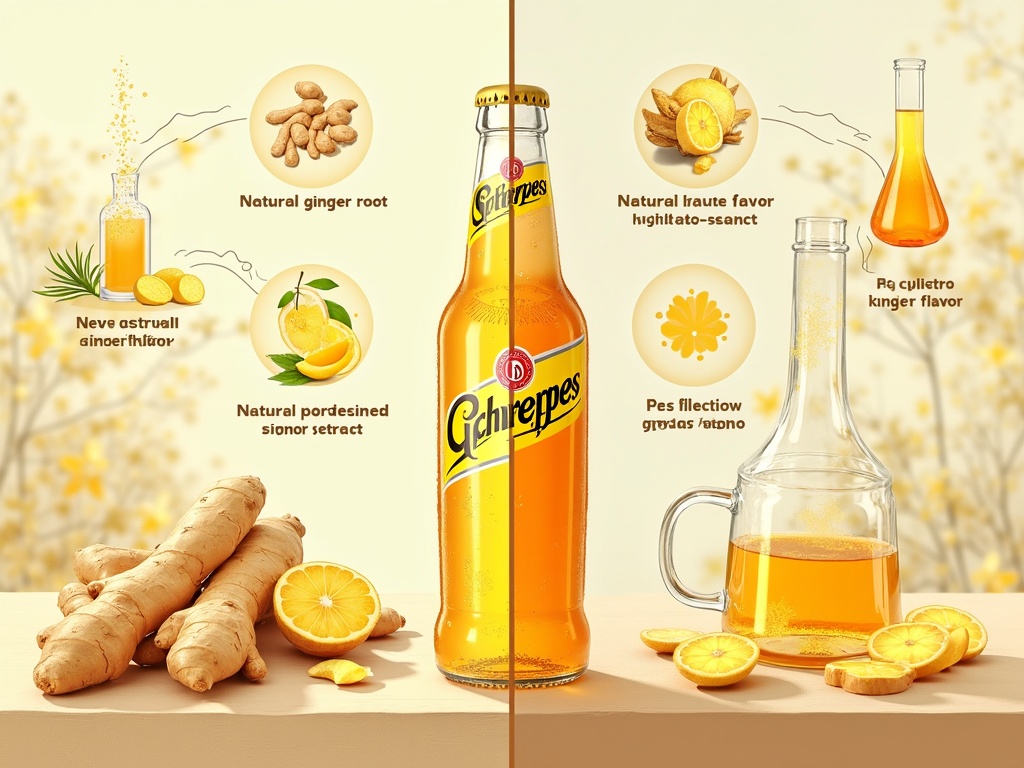
Legal Battles Over “Real Ginger” Claims
Schweppes’ parent company, Keurig Dr Pepper, has navigated significant legal challenges over their ginger ale marketing claims in recent years. I’ve observed how these court cases fundamentally changed how major soda brands advertise their ginger content.
Major Lawsuits and Consumer Complaints
A pivotal 2018 class-action lawsuit targeted the company’s “Made from Real Ginger” marketing claims. Plaintiffs argued that both Canada Dry and Schweppes ginger ales contained only trace amounts of ginger compounds, making the advertising misleading to consumers who expected substantial ginger content. The legal action highlighted a significant disconnect between marketing language and actual product formulation.
The Canada Dry case proved particularly costly for Keurig Dr Pepper, resulting in an $11.2 million settlement. Courts required the company to remove “Made from Real Ginger” labels from their U.S. products, though they didn’t force the company to admit any wrongdoing. This settlement established important precedent for how beverage companies can market ginger-containing products.
Impact on Current Marketing Practices
These legal battles fundamentally transformed Schweppes’ U.S. marketing approach. The company no longer uses “real ginger” claims in their promotional materials, opting instead for more careful language about their ingredients. Courts required clearer packaging language that better reflects the actual ginger content in these beverages.
I find it noteworthy that these changes primarily affected U.S. marketing, while other markets may still see different claims depending on local regulations. The false advertising accusations forced the entire industry to reconsider how they communicate about natural ingredients versus artificial flavoring.
For consumers concerned about ginger content, these legal outcomes provide important context. While Schweppes ginger ale’s digestive benefits remain a topic of interest, the court cases clarified that major commercial brands typically contain minimal actual ginger extract. Understanding this distinction helps consumers make informed choices about whether they’re seeking natural ginger benefits or simply enjoying the flavor profile of ginger ale.
The Keurig Dr Pepper settlement also established clearer standards for how beverage companies must substantiate their natural ingredient claims, creating more transparency in the industry overall.
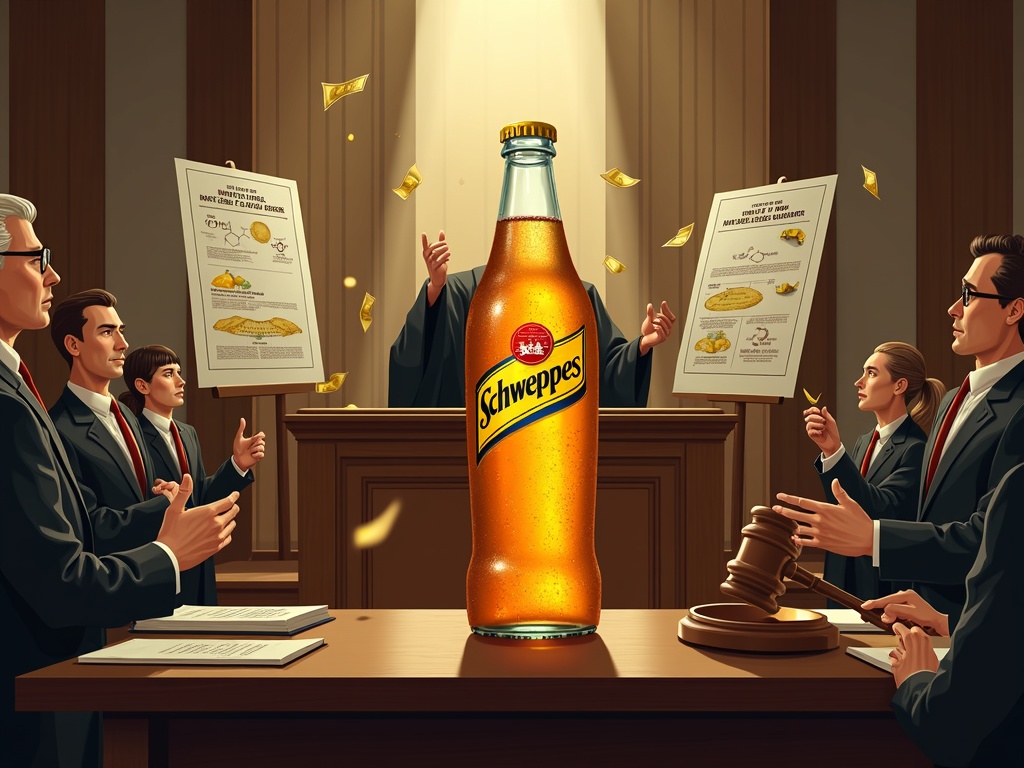
Different Ingredients Across Borders: U.S. vs. U.K. Schweppes
I’ve discovered striking differences between Schweppes ginger ale formulations when comparing U.S. and U.K. versions. The ingredient lists reveal how regional preferences and regulations shape what ends up in your glass.
Key Ingredient Variations
The U.K. Schweppes Ginger Ale contains these ingredients: Carbonated Water, Sugar, Citric Acid, Sodium Citrate, Natural Ginger Flavouring with Other Natural Flavourings, Caramel Colour, and Sweeteners (Acesulfame K, Sucralose). Notice how the U.K. label explicitly states “Natural Ginger Flavouring” — a clear distinction from its American counterpart.
U.S. formulations differ significantly in several ways:
- High Fructose Corn Syrup replaces sugar as the primary sweetener
- Ginger flavoring isn’t specifically labeled as “natural”
- Different preservative and acid combinations appear
- Coloring agents may vary between regions
- Sweetener blends differ substantially
These variations reflect how food regulations and consumer expectations differ between countries. European labeling laws often require more specific ingredient declarations, which explains why the U.K. version clearly identifies natural ginger flavoring.
The sweetener difference proves particularly notable. American consumers typically encounter High Fructose Corn Syrup (HFCS) in their Schweppes, while U.K. drinkers get a combination of sugar and artificial sweeteners like Acesulfame K and Sucralose. This creates different taste profiles and potentially different health implications.
I find the ginger component especially interesting when considering Schweppes ginger ale’s digestive benefits. The U.K.’s explicit mention of natural ginger flavoring suggests a more authentic ginger presence, though both versions likely contain minimal actual ginger content.
Manufacturing costs also influence these formulations. HFCS remains cheaper in the United States due to corn subsidies and sugar tariffs, making it the preferred sweetener for mass-market beverages. European markets face different economic pressures, leading to alternative sweetening strategies.
Cultural taste preferences play a role too. American palates often favor sweeter profiles that HFCS provides, while European consumers may prefer the more complex sweetness profile from sugar combined with artificial sweeteners.
The labeling differences extend beyond just ingredients. U.K. regulations mandate clearer identification of flavoring sources, which explains why consumers see “Natural Ginger Flavouring” rather than the vaguer “natural flavors” common on U.S. labels.
These regional variations matter for consumers with specific dietary needs or preferences. Someone avoiding HFCS would prefer the U.K. version, while those managing blood sugar might find different responses between the formulations. For those wondering about Schweppes ginger ale’s effects on digestive issues, the actual ginger content becomes crucial information.
International travelers often notice these taste differences immediately. The U.K. version typically tastes less sweet initially but carries a different finish due to the artificial sweetener blend. American versions provide that familiar HFCS sweetness that many associate with classic soda flavors.
I recommend checking ingredient labels when purchasing Schweppes internationally, especially if you have specific dietary restrictions or preferences. The same brand name doesn’t guarantee identical formulations across different markets, and these variations can significantly impact both taste and nutritional profile.
Ginger Ale Spectrum: Flavor Extracts vs. Real Ginger Root
The ginger ale market splits dramatically between mass-market brands and premium options that contain actual ginger root. Most mainstream manufacturers, including Schweppes, Canada Dry, and Vernors, formulate their beverages using natural or artificial ginger flavors rather than incorporating whole ginger root into their recipes.
Premium Brands Leading the Real Ginger Movement
Several companies have carved out market positions by emphasizing authentic ginger content. Reed’s Ginger Brew stands out as a notable example, using fresh ginger root and advertising up to 26g per bottle. This substantial amount creates a distinctly spicy bite that sets it apart from conventional options. Q Mixers takes a similar approach, listing organic ginger in its ingredients and positioning itself as a premium mixer for cocktails and sophisticated beverages.
These authentic ginger brands typically exhibit several characteristics that distinguish them from mass-market alternatives:
- Spicier, more intense flavor profile
- Cloudier appearance due to ginger particles
- Higher price points reflecting premium ingredients
- Sediment settling at the bottom of bottles
- More pronounced warming sensation
The difference in production methods explains these variations. While companies like Schweppes rely on standardized flavoring systems that deliver consistent taste across millions of bottles, brands using real ginger must manage the natural variations and processing challenges that come with whole ingredients. Fresh ginger root contains volatile compounds that create complexity but also require careful handling during manufacturing.
I notice significant taste differences when comparing these categories. Mass-market ginger ales deliver a sweet, mildly spiced flavor that appeals to broad consumer preferences. Products made with actual ginger root provide a more assertive, warming experience that can be quite intense for those accustomed to conventional options.
Cost considerations play a major role in consumer choice. Authentic ginger beverages typically retail for two to three times the price of standard brands. This premium reflects both ingredient costs and smaller production volumes compared to major manufacturers who benefit from economies of scale.
For consumers specifically seeking digestive benefits or an authentic ginger experience, reading ingredient lists becomes crucial. Look for products that explicitly mention “ginger root,” “fresh ginger,” or “organic ginger” rather than vague terms like “natural flavors.” These specific callouts indicate actual ginger content rather than synthesized compounds designed to mimic ginger taste.
The marketplace continues evolving as consumer awareness grows about ingredient authenticity. Some regional brands and craft producers now emphasize their use of real ginger as a key differentiator. However, major brands maintain their current formulations because they deliver consistent flavor profiles that satisfy their target demographics while keeping costs manageable.
Quality varies even among brands claiming real ginger content. Some products contain minimal amounts that barely influence taste, while others pack substantial quantities that create noticeably potent beverages. I recommend trying different options to find products that match your preference for ginger intensity.
Storage considerations also differ between these categories. Beverages containing actual ginger particles may require gentle handling and occasional mixing to redistribute settled ingredients. Mass-market brands maintain consistent appearance and taste regardless of storage conditions.
The decision between flavor-based and ginger root beverages ultimately depends on individual preferences for taste intensity, authenticity, and budget considerations. Those wanting the strongest ginger experience should seek brands that prominently feature real ginger content, while consumers preferring milder, sweeter profiles may find conventional options more appealing. Understanding these distinctions helps buyers make informed choices that align with their expectations for both taste and potential health benefits.
https://www.youtube.com/watch?v=UwdehfsAh-M
Health Implications and Consumer Choices
Real ginger delivers impressive health benefits that have made it a prized ingredient for centuries. I’ve researched the documented advantages, which include powerful anti-inflammatory effects, significant antioxidant activity, and proven nausea relief properties. These benefits stem from bioactive compounds like gingerol and shogaol found naturally in fresh ginger root.
Schweppes’ approach to ginger flavoring creates a different scenario for health-conscious consumers. The brand’s reliance on “Natural Flavors” may incorporate ginger compounds, but these appear in amounts too small to provide measurable health benefits. I find this particularly important because many people assume they’re getting therapeutic properties from their ginger ale consumption. Schweppes ginger ale’s digestive benefits remain questionable when actual ginger content stays minimal.
Premium ginger beverage brands that use actual ginger root present a more promising option. These products might offer trace health benefits, though the extent depends entirely on how much real ginger each manufacturer includes. I’ve noticed significant variation across brands, with some containing barely detectable amounts while others incorporate substantial ginger quantities that could provide mild therapeutic effects.
Making Informed Beverage Decisions
Smart consumer choices require evaluating several key factors when selecting ginger beverages:
- Ingredient transparency – Look for brands that clearly state ginger root content rather than hiding behind vague “natural flavoring” terms
- Flavor intensity preference – Real ginger creates sharper, more complex taste profiles compared to artificial alternatives
- Primary purpose – Consider whether you want refreshment, potential health benefits, or digestive support during illness
- Price point tolerance – Authentic ginger beverages typically cost more than mass-market options using synthetic flavoring
I recommend reading ingredient lists carefully since marketing claims don’t always reflect actual ginger content. Products listing “ginger root” or “ginger extract” among the first few ingredients generally contain more beneficial compounds than those mentioning only “natural ginger flavor” near the end of lengthy ingredient lists.
Your intended use should guide your selection process. If you’re seeking genuine anti-inflammatory or nausea relief properties, I’d suggest choosing brands with verifiable ginger root content or brewing fresh ginger tea instead. For casual refreshment without health expectations, standard ginger ales like Schweppes serve their purpose adequately.
Consumer awareness plays a crucial role in driving industry changes. As more people demand ingredient transparency and authentic formulations, manufacturers respond by developing products with higher real ginger content. I’ve observed this trend accelerating as health-conscious consumers become more educated about ingredient labeling practices.
Price often reflects ginger authenticity, though expensive doesn’t automatically guarantee quality. Some craft beverage makers charge premium prices while still using primarily artificial flavoring. Conversely, certain mid-range brands incorporate surprising amounts of real ginger without charging luxury prices.
The carbonation factor also affects ginger’s potency. Highly carbonated beverages can mask subtle ginger flavors, leading manufacturers to rely more heavily on artificial enhancers. Lower carbonation levels typically allow natural ginger characteristics to shine through more prominently.
I suggest trying various brands to identify which formulations meet your specific needs. Keep notes about ginger intensity, ingredient quality, and how each product makes you feel. This personal testing approach helps cut through marketing claims and establishes your preferences based on actual experience rather than advertising promises.
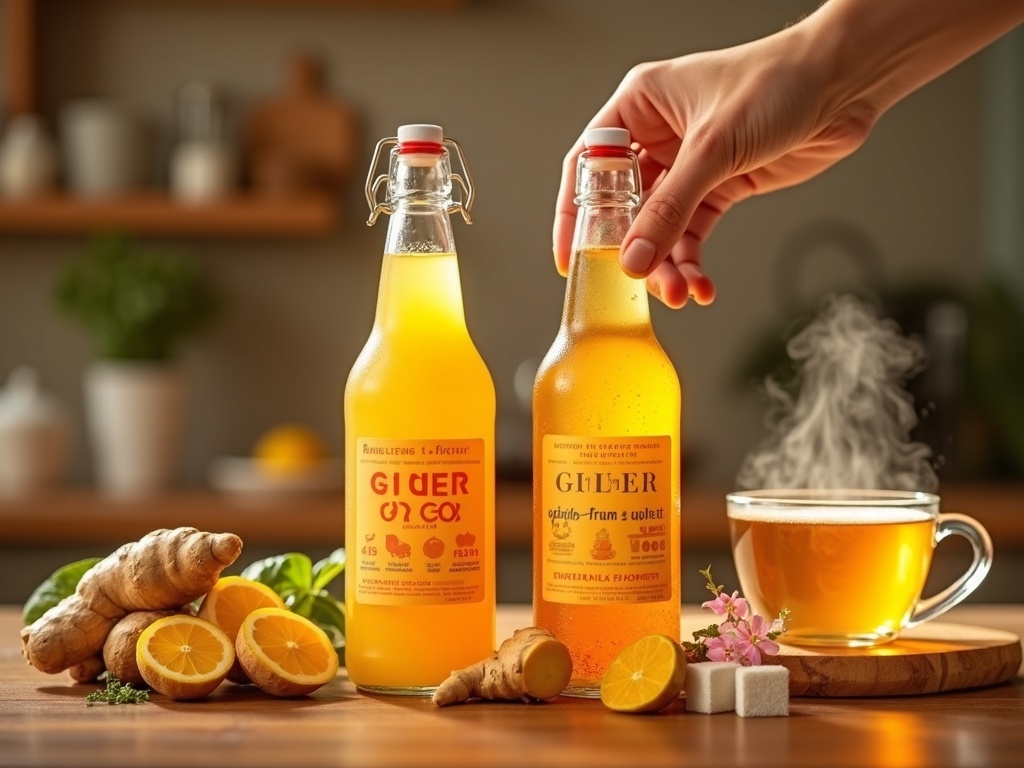
Sources:
FDA – CFR Title 21 (Natural Flavor Definition)
Reuters – Settlement Over “Real Ginger” Lawsuit
NPR – Natural Flavor Investigation in Ginger Ale
Washington Post – Understanding “Natural” Food Labeling

